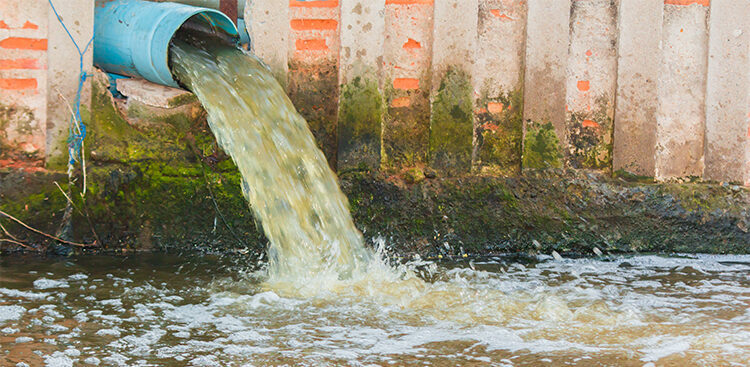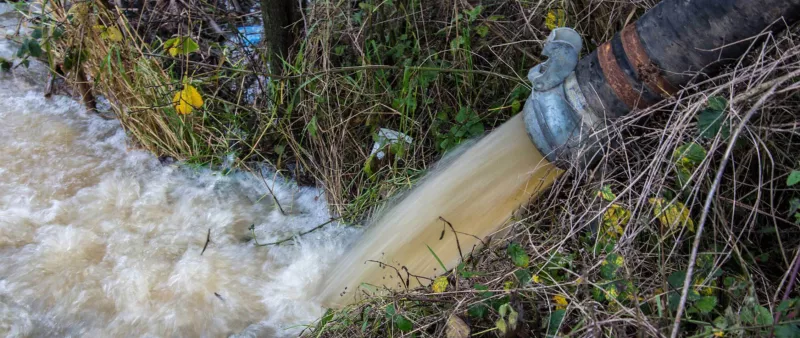Innovative solutions for wastewater purification and PFAS removal
Driven by per- and polyfluoroalkyl substances (PFAS) pollution, regulators are increasingly restricting wastewater emissions. That’s why wastewater treatment plants (WWTPs) should look into innovative solutions to upgrade their abatement system.
The Challenges of Treating Wastewater
WWTPs have to remove a wide range of pollutants such as chemical oxygen demand (COD), adsorbable organic halides (AOX), surfactants, and PFAS. Furthermore, their purification needs depend on the level of contamination in the incoming wastewater. For instance, if the concentration of pollutants is too high, the contaminated water has to be pre-treated inside the production plant itself, prior to being sent to a WWTP. On the other hand, when emission limits are very stringent (discharge into a nearby river), a polishing step downstream of the plant might be necessary.


The Pros of Activated Carbon Mobile Filters for WWTPs
Activated carbon mobile filters can help WWTPs overcome the above mentioned barriers.
- Greater flexibility vs fixed filters: when relying on fixed units, an increase of production over time will mean buying an extra unit to meet emission limits (e.g., COD). A similar scenario occurs following regulations tightening or contamination variations (e.g., AOX in phytosanitary wastewater). Tapping into a modular system will let plants solve this issue. All it takes is to add more mobile units to handle the extra purification needs. In addition to this, mobile filters can work either as a pre-treatment or polishing step downstream of the WWTP.
- Versatility of activated carbon: besides COD, activated carbon can efficiently remove many other wastewater contaminants. Like, non-ionic surfactants, for instance, that can challenge biological treatments.
- Water reuse: other than promoting drought resilience, reusing wastewater helps companies comply with the EU Water Reuse Regulation. However, before being suitable for reuse, pollutants must be removed from wastewater via an adequate multi-stage treatment. In this regard, activated carbon filtration can be strategically placed prior to reverse osmosis to avoid membrane clogging or on the treatment of the concentrate of this R.O. to remove concentrated pollutants prior to discharge or further reuse.
How to integrate PFAS removal into wastewater management
Along with the above mentioned contaminants, activated carbon also efficiently removes PFAS from wastewater.
POP compliance
However, once loaded with PFAS, the spent carbon becomes a solid waste and its disposal is subjected to the persistent organic pollutants (POPs) Regulation. In particular, if one or more thresholds indicated by this legislation (see points I-III below) are exceeded, reactivation of the activated carbon cannot be executed.
- PFOS (maximum 50 mg/kg)
- PFOA (maximum 1 mg/kg)
- PFHxS (maximum 1 mg/kg)
In this case, the activated carbon must be disposed of elsewhere in accordance with local regulations, e.g. by high-temperature incineration. Conversely, if the measured PFAS level is below the relevant limit, reactivation is possible, provided there are no other requirements from local authorities.

Measuring PFAS removal efficiency
To ensure POP compliance and make an informed decision about the best PFAS waste treatment option, DESOTEC has developed an in-house methodology (DSTM37) to quantify activated carbon’s loading for 24 PFAS representatives. This methodology was designed in collaboration with the Flemish government-affiliated Institute for Technological Research (VITO). Entailing an improved extraction step, this upgraded method was then accepted by the relevant authority.
The fate of 24 PFAS representatives during the removal process (reactivation + flue gas cleaning) was investigated under standard operating conditions. Three different PFAS-loaded activated carbon were treated under standard operating conditions. According to measurements carried out by an external party (Eurofins), no PFAS were found neither on the reactivated carbon nor in the stack, thus translating in a 100% removal efficiency. This not only proves the POP compliance of our reactivation but also gives a more sustainable option to WWTPs for their PFAS removal.
Case study: Removing PFAS from water at a waste management site
This case study illustrates DESOTEC’s capacity to deliver fast, effective, and sustainable filtration solutions tailored to client needs in the specialty chemicals sector.
Challenge
A large firm managing multiple waste management projects across France wanted to future-proof its business against upcoming stricter PFAS emission limits. Therefore, they were after a PFAS removal technology to test. Among several options, the company chose DESOTEC’s.
While the customer’s treated water was safe for discharge under current legislation, tests showed a PFAS level (732 µg/l) which is likely to exceed any future emission limit. The client therefore asked DESOTEC for help in lowering PFAS, using the current drinking water limit of 100 ng/l per individual PFAS molecule as its benchmark.
Solution
DESOTEC installed two MOBICON filters in series to treat a flow rate of 60 m³/ hour. The first filter was filled with a carbon grade suitable for removing the bulk of organic compounds in the wastewater, i.e. COD and larger PFAS molecules. Instead, the second unit was filled with a higher grade carbon, from our B-PURE® range, designed for adsorbing even the smallest PFAS molecules such as perfluorobutanoate (PFBA), perfluorobutanesulfonic acid (PFBS) and trifluoroacetate (TFA). This two-filter model preserves the more costly higher grade carbon to treat the smaller PFAS, as a polishing step, thus fostering sustainability and cost-effectiveness.
Results
After the filters went live, tests showed that the treatment was consistently bringing PFAS levels down to below the drinking water limit. The environmental authorities have also tested the water a few times as part of a data collection exercise that will feed into the eventual PFAS treatment framework for France. Their measurements tally with those carried out for the client.
Once a mobile filter is saturated, it is brought back to DESOTEC’s facilities where the spent carbon is safely emptied and treated according to POPs regulations. The measurement of the adsorbed PFAS level is done as per the innovative method described above. This allows us to make an informed decision about the best PFAS treatment option. If the PFAS concentration is below the POPs Regulation limits, the saturated carbon will be subjected to a thermal treatment at DESOTEC facilities, safely and sustainably, making sure PFAS is eliminated below detectable levels. The carbon can then be reactivated for reuse.
Conclusion
As explained in this article, circular activated carbon mobile filters can help WWTPs safeguard their operations while boosting sustainability.
Thanks to a reliable method to measure PFAS adsorbed on the activated carbon, the treatment of the saturated filtration media can now be performed in a safe and POP-compliant way. This provides the wastewater treatment sector with a reliable, cost-effective and eco-friendly route to eliminate PFAS.
How DESOTEC can help
Our activated carbon mobile filtration solutions are very effective for wastewater treatment and PFAS removal. If you’d like to discuss or test our solutions, get in touch with our engineers.
Contact our expertsHow DESOTEC can help
Our activated carbon mobile filtration solutions are very effective for wastewater treatment and PFAS removal. If you’d like to discuss or test our solutions, get in touch with our engineers.
Contact our experts-
PFAS
Finding PFAS in the environment is a huge concern globally. For industry, it’s a challenge that companies must now tackle head-on. DESOTEC provides reliable, flexible solutions to eliminate PFAS pollution permanently and sustainably. -
Waste and wastewater management
Sustainable air and water purification for waste management and recycling to protect our environment and control odours. -
Our filtration solutions
We offer a wide range of filter models and carbon grades to suit your industrial water or air purification requirements.
Related content
-
Removing and destroying residual PFAS in groundwater
Explore a chemical production company's challenge in Belgium as they tackle PFAS contamination during a vital piping replacement project. With strict water quality regulations, they turn to DESOTEC for expertise in PFAS purification after discovering high PFOS levels in groundwater. -
Purifying wastewater of PFOS and other PFAS
Combat the threat of PFAS contamination with DESOTEC's sustainable filtration solutions, ensuring regulatory compliance and safeguarding environmental and human health. -
Removing PFAS from water at a waste management site
Across the world, legislation to control poly- and perfluoroalkyl substances (PFAS) is in development, if not already in place. This French waste management services company is future-proofing its business by trialling DESOTEC’s filters to ensure that its operations will be compliant with any future PFAS control framework.





